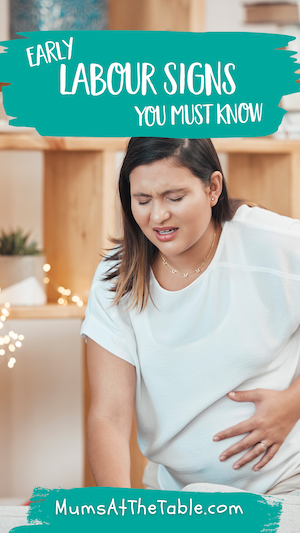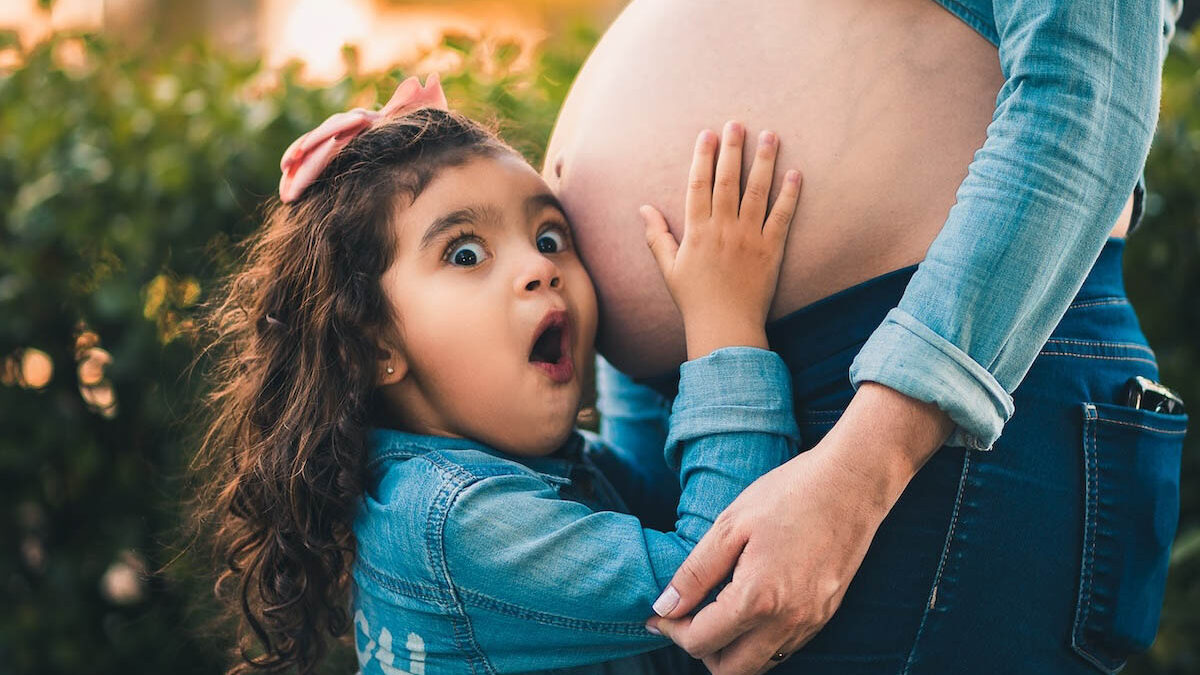You’ve got the nursery ready, the hospital bag packed and maternity leave all sorted. Now you’re just waiting, and wondering when it’s going to happen. It’s time to watch out for these early signs of labour.
If this is your first pregnancy, labour is something you are no doubt feeling a little dubious about. It’s one thing to hear all the anecdotal stories, but it’s a whole other thing to begin to experience it for yourself.
Here are the “must knows” that can save you a lot of time and energy during the early stages of labour, and help speed up recovery.
Signs the big day is coming
Labour is most commonly divided into three stages:
- the dilation of the cervix
- the birth of the baby (the most exciting part)
- the birth of the placenta
The early signs of labour listed below are the changes that happen in your body, both hormonally and physically, as it gets ready to deliver the baby.
If you are in the last couple of months of your pregnancy, you can probably relate to feeling breathless, uncomfortable and having difficulty sleeping. The baby will also have dropped deeper into your pelvis, putting pressure on your bladder, adding to the already high level of discomfort. Due to the lack of sleep, many pregnant women will feel very tired, often not wanting to do anything but lie down, keep cool and have lots of pillows for support.
A word of advice to expecting mums: Try to have all the things you want done ticked off by the six- or seventh-month mark. (Your nesting instinct is so strong then, you probably would have had it all done anyway.)
The best thing you can do in the final weeks of your pregnancy is to get plenty of rest. Be sure to nourish yourself in preparation for the big day. By 37 weeks, your baby could come any day, and you want to be as physically and emotionally ready as possible.
Some of the most common early signs of labour that may start in the days leading up to the birth are:
- period-like cramps
- vaginal discharge changes, the mucus plug comes away, may also be a small bloodstained discharge (this may happen 24 hours before labour starts)
- low and dull back aches
- pressure in the vagina or back passage
- diarrhoea
- nausea
- mild contractions such as Braxton hicks contractions
These symptoms can be very subtle, and it may be hard to differentiate between the symptoms you already generally have as part of your pregnancy.
However, if you’re actively listening to your body, you should be able to observe the signs and symptoms that are changing. If you notice any dramatic changes before your due date, it is important to talk to your healthcare provider to rule out health concerns or premature labour.
When you start to notice these early signs of labour, get as much rest as possible and keep well hydrated. You don’t want to be going into labour exhausted or dehydrated. If possible, try to go for a light brisk walk once a day.
It’s also super crucial you eat foods that are going to sustain you throughout the labour experience. Ignore those sugary and salty cravings. Instead, think high protein and healthy fats. If you have nausea, try to get some fresh ginger in your diet too.
The three stages of labour
After the more subtle symptoms have started, you may have a short window of time before your actual labour starts when you will definitely know the difference. The painful cramps will increase to what are officially regular contractions (not just fake ones. We’re looking at you, Braxton hicks).
Obstetrician and gynaecologist Dr Peter Wood explains the three stages of labour in the video below:
You may notice a sudden gush or trickle of water, known as one’s “water breaking”. This is when the amniotic sac ruptures and amniotic fluid leaks out. This sudden gush of fluid is usually very noticeable and may feel as though you’ve wet your pants. During labour, this may or may not happen naturally and that’s OK. If it doesn’t happen, your midwife or doctor will break your waters to speed up the labour.
Labour stage 1
The three stages of labour are clearly defined periods that have marked changes. During stage 1 of labour, the cervix thins out and dilates from 0 to 3 centimetres. This usually isn’t painful and can go on for a while. You may or may not get contractions. This is sometimes called the latent phase.
Next comes the active labour phase or established labour, which is exactly what it sounds like: Active contractions. The contractions will come at regular intervals, and are strong and intense. The cervix dilates from 3 to 8 centimetres.
The final phase of stage 1 is the transition phase, in which the cervix fully dilates (10 centimetres). The contractions become more painful and intense, and there may be no rest in between them. As the baby descends the birth canal, you may feel a strong urge to push and also may feel like you need to go to the toilet, due to the baby pushing against the rectum.
Labour stage 2
The second stage is the best part because your baby is about to enter the world. The contractions will continue. If you are having a natural delivery, you will be pushing your baby out. As each contraction peaks, you will feel the urge to push and the baby will descend further until the baby’s head appears and can be seen at the vaginal entrance. Once the baby’s head crowns, your midwife will guide you to safely push your baby out. Once the baby’s head and shoulders are out, the rest of the body will naturally and easily slip out. Woohoo! You’ve done it! Congratulations.
Labour stage 3
The final stage is when the placenta is delivered. This can happen 5–30 minutes after your baby is born. The contractions associated with this are usually much less painful and more bearable.
In all three stages of labour, your baby’s and your wellbeing will be actively monitored. If there are any major concerns, your labour may be redirected to a C-section delivery.
You can do this
Labour can be scary to think about. It’s a painful and vulnerable time. But remember, the female body is perfectly designed to house and deliver a baby. Even if you need a C-section, there is nothing wrong with your body, and there’s no need to feel guilty.
In summary, here are the early labour “must knows” and tips to keep in mind.
Early signs of labour
- dramatic vaginal discharge changes
- cramping or pain that is intensifying
- diarrhoea and nausea
- sudden burst of fluid leaking out feeling like you’ve wet your pants
Tips to be ready
- Remember to rest, practise self-care and breathe
- Eat nourishing, sustaining food
- Drink lots of water to keep hydrated
- Have your preparations done ahead of time
What next?
- Stretch and sweep and other ways to bring on labour
- 5 tips for an easier labour
- Complications during birth and labour

How helpful was this article?
Click on a star to rate it!
0 / 5. 0
Be the first to rate this post!
Adriana Wales
Related posts
Subscribe
Receive personalised articles from experts and wellness inspiration weekly!


